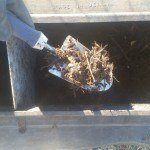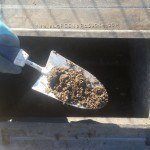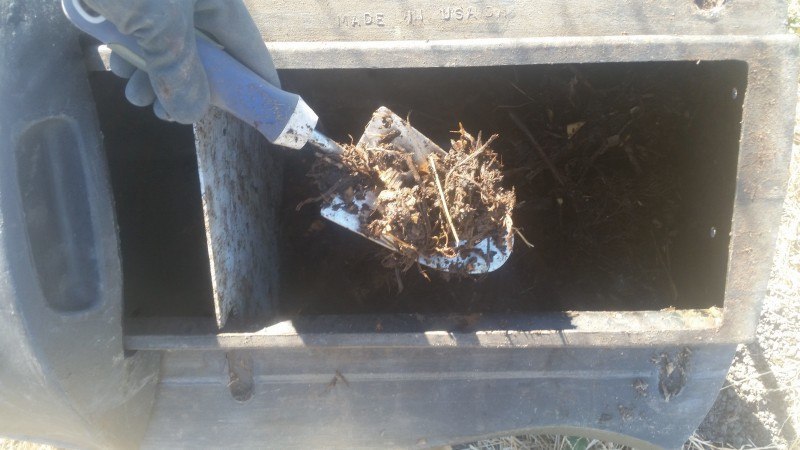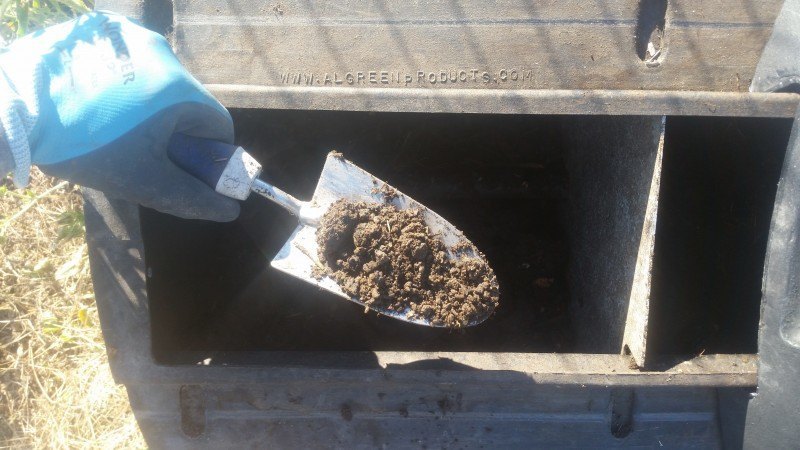The benefits of composting are abundant. By making your own compost, you can cut down on household waste, improve your soil to grow healthier plants without chemicals, and reduce the costs associated with your garden. So the decision was easy, but starting this adventure was not quite so straight forward.
First things to consider…
- Space – For starters you’ll need to put your compost operation somewhere. Since hot, decaying organic matter has the tendency to stink, location can be very important. Ours is located on the far side of our chicken coop, away from the house. This makes it easy to combine the chores of feeding the chickens and emptying our kitchen compost container.
- Ingredients – What you put into your compost bin is going to determine exactly what you’re going to be shoveling out. Because of this, you’ll need to make sure you have the right things to add. The rule of thumb is to use one-part greens and two-parts brown. Bigger brown materials (broken up sticks and twigs, straw, dead leaves) allow oxygen into the compost, and nourishes the beneficial organisms found inside. We found out early on: too much greens will make your compost smelly, slimy, and will ultimately slow the rates of decomposition. We don’t throw everything into our compost, and getting a feel for how much of each didn’t happen over night.
This is a great reference table found at EarthEasy.com which we’ve been using:
|
Material
|
Carbon/Nitrogen
|
Info
|
| table scraps |
Nitrogen
|
add with dry carbon items |
| fruit & vegetable scraps |
Nitrogen
|
add with dry carbon items |
| eggshells |
neutral
|
best when crushed |
| leaves |
Carbon
|
leaves break down faster when shredded |
| grass clippings |
Nitrogen
|
add in thin layers so they don’t mat into clumps |
| garden plants |
—
|
use disease-free plants only |
| lawn & garden weeds |
Nitrogen
|
only use weeds which have not gone to seed |
| shrub prunings |
Carbon
|
woody prunings are slow to break down |
| straw or hay |
Carbon
|
straw is best; hay (with seeds) is less ideal |
| green comfrey leaves |
Nitrogen
|
excellent compost ‘activator’ |
| pine needles |
Carbon
|
acidic; use in moderate amounts |
| flowers, cuttings |
Nitrogen
|
chop up any long woody stems |
| seaweed and kelp |
Nitrogen
|
apply in thin layers; good source for trace minerals |
| wood ash |
Carbon
|
only use ash from clean materials; sprinkle lightly |
| chicken manure |
Nitrogen
|
excellent compost ‘activator’ |
| coffee grounds |
Nitrogen
|
filters may also be included |
| tea leaves |
Nitrogen
|
loose or in bags |
| newspaper |
Carbon
|
avoid using glossy paper and colored inks |
| shredded paper |
Carbon
|
avoid using glossy paper and colored inks |
| cardboard |
Carbon
|
shred material to avoid matting |
| corn cobs, stalks |
Carbon
|
slow to decompose; best if chopped up |
| dryer lint |
Carbon
|
best if from natural fibers |
| sawdust pellets |
Carbon
|
high carbon levels; add in layers to avoid clumping |
| wood chips / pellets |
Carbon
|
high carbon levels; use sparingly |




